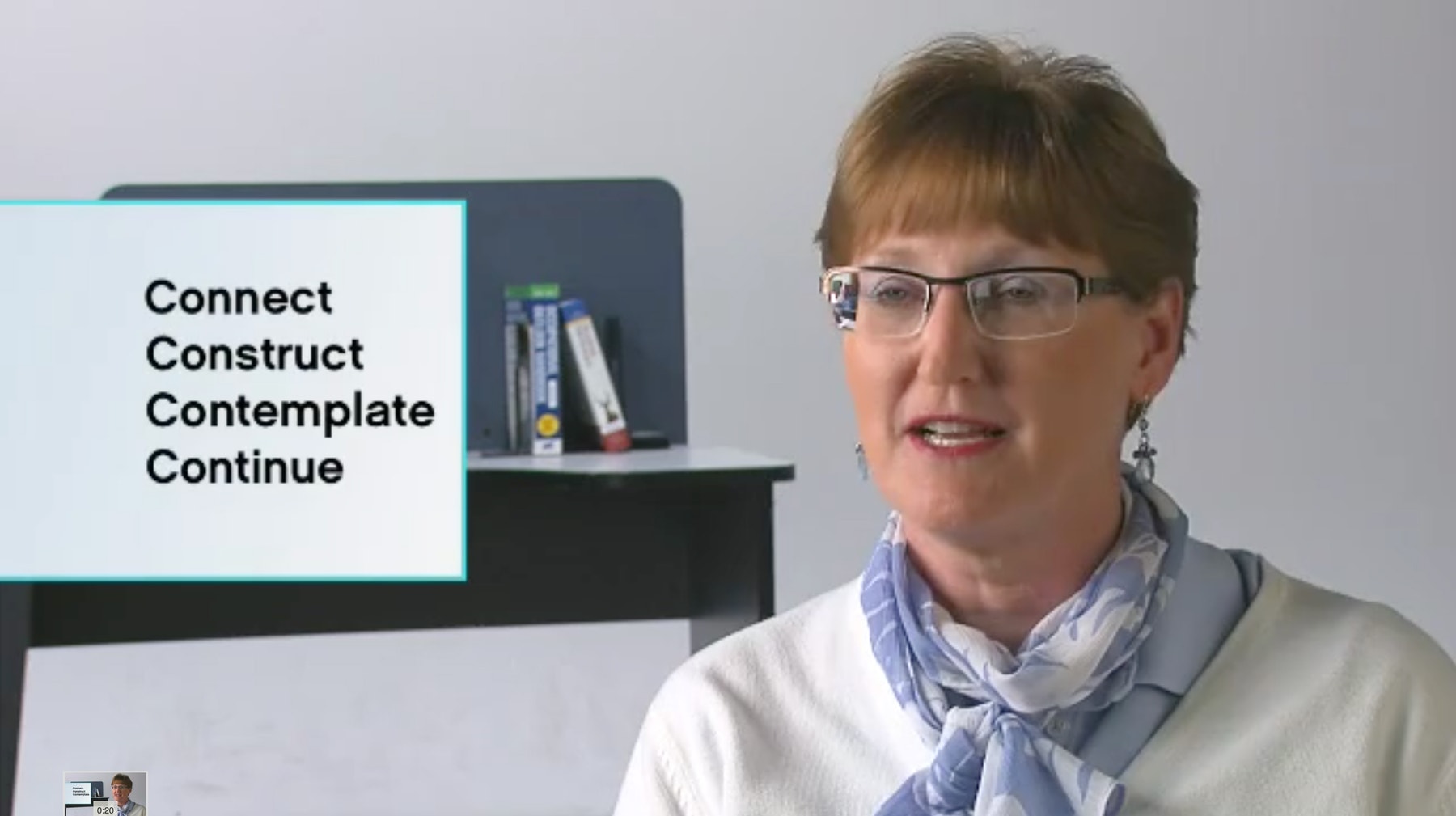LEGO® Education Academy Planning Your Lesson
The 4Cs Process
The Four Cs process lies at the heart of the approach to learning held by LEGO Education. It describe a process structure which all LE teaching resources follow in order to ensure the optimal learning outcome when using the LE materials in the classroom and it forms the foundation of all LE activities.
The Four Cs process has grown out of a belief in the power of students’ construction of objects and exploration of cause and effects, as well as students’ active experimentation with seeking out solutions for challenges – as ideal processes for building up new knowledge about the world around them. This is an approach to learning growing out constructionism and associated lines of thought concerning how to create effective learning experiences for others.

The Four Cs process contains 4 phases which is described in these 4 headlines: “Connect => Construct => Contemplate => Continue”. These 4 phases are steps in a process which is iterative and should often be seen as learning spiral.
Connect
The Connect phase is all about triggering the motivation of the learners through tingling their curiosity, helping them see the relevance of the learning content. It is also important to support the learners to believe in their own possible success with the learning process and content, and by giving the learner a feeling that the learning is satisfactory to him in one way or the other.
To connect the new field of knowledge and skills to knowledge that the students have already is important in the Connect phase. This is an effective way of supporting the students to believe in their own possible success by getting them to feel that they are not completely blank on this topic/ in this field as a starting point – they have a knowledge or skill base to start on.
Connecting to what the student already knows and/or already can do also enables the students’ experience of flow early in the learning process.
Construct
The Construct phase in the LEGO Education approach to learning creates a situation where the learners are given tools and a system to construct real, meaningful objects and artefacts with which they can experiment and experience cause and effect, observe connections, and understand more about the world around them.
The construct phase gives learners an opportunity to experience the learning content through several different modalities (senses) which - via research on embodied cognition - has shown to be of great importance for an effective learning process and a long-lasting learning outcome. When we use our body and especially our hands, a large portion of the brain is activated, which offers a greater chance of learning more effectively.
Contemplate
During the Contemplate phase, the learners are given the opportunity to contemplate on what they experienced during the construct phase. They are facilitated through a reflection process where they consider what they have constructed and what they observed while constructing and experimenting. Contemplation is facilitated by the teacher and is a way to support learners to think consciously about what they have achieved during the Construct phase.
So the Contemplate phase is a reflection process that often goes on between students in groups reflecting together and putting words to what they have experienced during the Construct phase. The teacher is playing a key role in this process as he is facilitating this reflection process ensuring that questions are asked to students which will support their shared reflection and verbalization process.
Continue
The Continue phase presents the learners with an activity or a challenge that brings into play the knowledge and skills acquired during the Construct-Contemplate phases. The Continue activity should be one that lets the learners apply the skills and experiment with the knowledge they have gained in order to experience flow in the application of the knowledge and skills.




